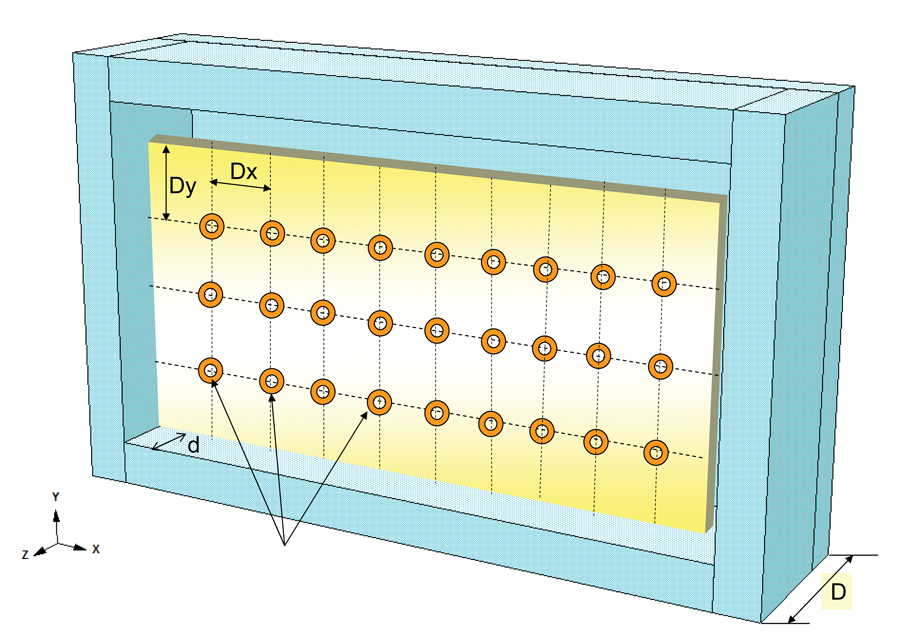As president of IEM LED Lighting Technologies, Dr. M. Nisa Khan consults in the solid-state lighting industry and educates consumers about LED lighting. She has a bachelor’s degree in physics and mathematics, and master’s and Ph.D. degrees in electrical engineering. Email her at nisa.khan@iem-led.com
Randy Wright of RKW Consulting (Montoursville, PA) recently said he doesn’t think of LED lamps as lamps. Instead, he describes them as “light-emitting diodes.” Randy’s comment came at a past UL Standards meeting for LED lamp retrofits, while several of us discussed LED lamp usage and characteristics. His comment caught my attention because I immediately understood the implication — that today’s LED illuminators, often termed as “lamps,” don’t illuminate like traditional lamps
Traditional, larger, continuous- and rounded-light sources offer broader Illumination, despite lower inherent luminance or brightness characteristics.
Contrastingly, today’s LED lamps or luminaires produce greater inherent luminance from individual elements because they’re small, flat and discrete “chips” arrayed on a flat, foundation board — often without effective secondary optics. Consequently, LEDs luminous-intensity radiation is confined to narrow, angular ranges that display a substantial amount of glare. Not surprisingly, they’re often described as bright, directional lamps that don’t resemble other, more-established lamps.
Randy’s observation was indeed appropriate.
But, bright, directional light sources are practical for illuminating flat signs and displays. In addition, most channel-letter builders install LEDs because of their characteristic features, and because they’re easier to install and consume less electrical energy than traditional lamps.
Can one improve LED-sign illumination and achieve even greater energy savings, especially over an extended period?
Advantages from LED Illumination
Most consumer electronics displays — TVs, smartphones, tablet computers and laptops — now use LCD screens that are back-illuminated by LED lamps. This feature allows the production of thin, attractive and brighter screens that far exceed older, cold-cathode systems. LED glare isn’t a problem because the LCD panels effectively screen the LED lamps. Glare, however, can be a problem in poorly designed, LED-based electronic- message centers (EMCs), but, through education, the problem has subsided in recent years.
Nonetheless, many signmakers’ LED-illuminated channel letters still lack the brightness produced by neon or fluorescent lamps.
Overcoming channel letters illumination challenges
LED modules placed too far from the sign face significantly diminishes because the lamp brightness, because, measured at a point sufficiently away from the light source, it falls off as the square of the distance between the point and the source. In essence, doubling the distance cuts the light output by a factor of four.
Use a design-optimization process when illuminating channel letters with LEDs. However, for an arbitrarily shaped, non-continuously or discretely illuminated LED sign, say a deep-return channel letter or a cabinet can, the problem heightens because while the sign-face midpoint may light satisfactorily, the face edges may appear dim.
Fig. 1 schematically shows the inside of rectangular sign (with the face removed) that contains a flat-panel, LED-grid array. The sign thickness is “D,” and the distance between the sign face and LED grid is “d”. The x- and y-grid spacings are “Dx” and “Dy” respectively. The luminance of each LED module is “L”. Such an LED-lamped module ensemble generates an approximate Lambertian light-intensity distribution (LID) as shown in Fig. 2. Although the near Lambertian is almost spherical in shape, the varying intensity shades over this sphere correspond to different luminous-intensity values, as shown in the candela (cd) bar scale.
Both figures are presented in three dimensions with the same XYZ-coordinate orientation, as noted.
The center of the Fig. 2 LID pattern corresponds to the LED-grid center in Fig. 1. When compared to the edge regions, it displays significantly higher luminous intensity. The illustration clarifies that the larger the distance “d”, the more drastic the edge dimming. Increasing “L” for each LED module may provide more illumination in the edges, but it will also make the center of the sign unnecessarily bright. It may also reduce the lifespan of the LED-lamped array.
To generate substantially uniform face brightness in LED-illuminated channel letters and other signs, L, Dx, Dy, d, and D must be optimized for each sign dimension and desired nominal brightness. No simple answer exists to quantify any optimum values for L or d for an arbitrary or non-standard sign.
However, a sign designer can determine the optimum, desired illumination via a combination of measured data from LED module vendors and calculated light-intensity parameters. Such an engineering process would then yield a set of optimum values for the five parameters in Fig. 1 and lead to adequately bright and uniformly illuminated signs.
A similar process may be applied to obtain optimum back illumination for LED-lit LCD screens that use similar grid arrays as shown in Fig. 1.
Beware of tradeoffs
The world displays vast provinces of signage that individually comprises varying sizes, colors and formats. Some of these are newly manufactured; others may be retrofitted with LED lamps. The large and higher-brightness retrofits may require high-power LEDs in a densely arrayed pattern, which could require thermal-management systems — ventilation, heat sinks or other systems — to maintain a satisfactory LED-junction temperature.
Advertisement
Dr. Nisa Khan has patented a thermal-management handling system (U.S. 8,506,119 B2; efficient, uniform and dimmable sign- and display-illumination methods) that eliminates many problems discussed in this column.



 Tip Sheet4 days ago
Tip Sheet4 days ago
 Business Management2 weeks ago
Business Management2 weeks ago
 Women in Signs2 weeks ago
Women in Signs2 weeks ago
 Real Deal5 days ago
Real Deal5 days ago
 Benchmarks1 day ago
Benchmarks1 day ago
 Editor's Note1 week ago
Editor's Note1 week ago
 Line Time2 weeks ago
Line Time2 weeks ago
 Product Buying + Technology1 week ago
Product Buying + Technology1 week ago









